CFSA Farm Tour – Eco Farm
Our second stop on the farm tour was Eco Farm, a small diverse operation in Orange County, NC. Eco is run by Cindy and John Soehner and has been in operation since 1995.
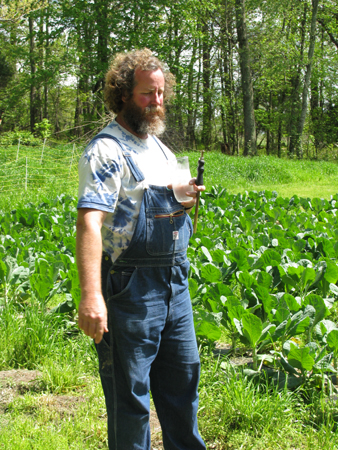
John proclaimed that the large hackberry tree on the property is in fact THE largest hackberry tree, anywhere.
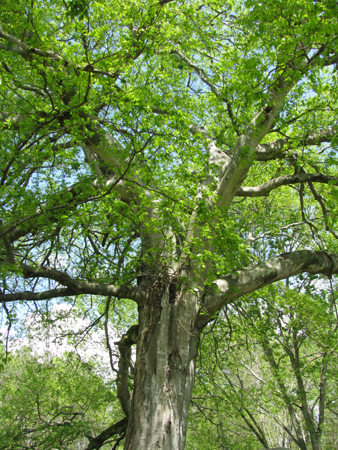
Back to the beginning…the first thing we saw when we arrived were a handful of pigs feeding on fruit and vegetable scraps from the Lantern Restaurant and other such places. They seemed to be enjoying the spent lemons and limes which seemed to make up the majority of the piles.

Elsewhere on the property were young turkeys…
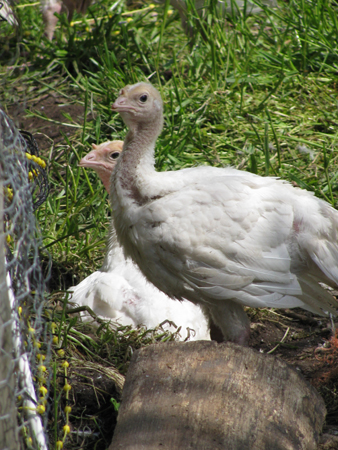
…and Vernon, the farm’s pet pig. Vernon seemed to have full access to the farm as there was no fencing around his little pig house.
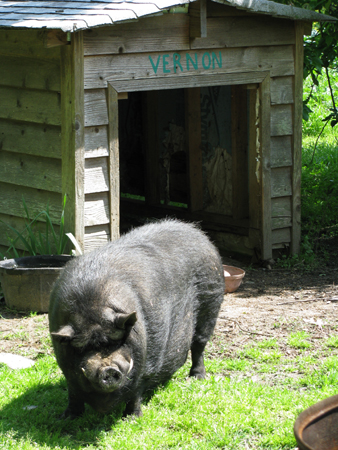
Eco Farm makes use of a passive solar greenhouse made of AAC block, the same kind of block we are going to build our house out of. The block has a very high insulation value, which makes it a great material for an unheated greenhouse.
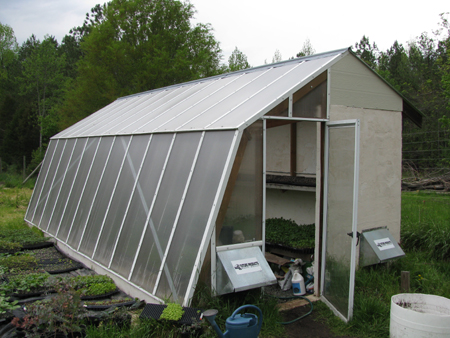
One of the big products from Eco Farm is shiitake mushrooms. Dozens of stacked log piles were scattered throughout a shady wooded portion of the farm.
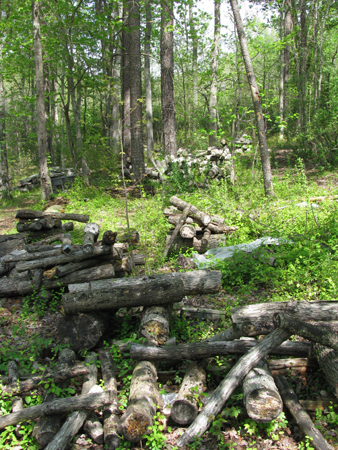
Logs are drilled all the way around with 5/16″ holes for dowel plugs or 1/2″ for saw dust plugs. The holes are then covered with wax as are the ends of the logs. A close up of shiitake plugs –
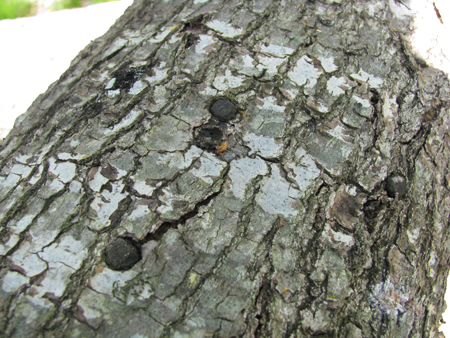
It takes two years for shiitake logs to really start producing.
John mentioned that he has good luck using gum tree logs even though most growers suggest using oak only. John said he can grow mushrooms on pretty much any log, but the lifespan will vary greatly depending on the type of wood used. Typically the logs used in mushroom production last four to five years before they become too rotten to produce decent flushes of mushrooms. After their life in production, logs can be further composted and used in the fields.

Prime time for shiitakes is July through September. During this time the logs are submerged overnight in cold water then left in stacked piles. Mushrooms will emerge in about a week after soaking.
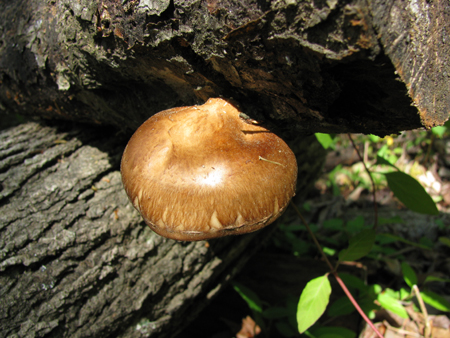
Near the mushroom logs was a small field of greens. The tatsoi had been left to flower and go to seed, probably to bring in beneficial pollinators. I was able to get some good bee pictures, but was briefly interrupted when a student reporter with The Daily Tarheel asked me a few questions. None of my answers made it into the article. I don’t really remember saying much that was quotable or newsworthy, so I guess it was for the best.
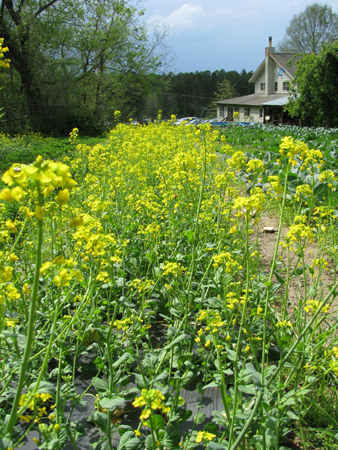
The bee pictures pretty much speak for themselves…
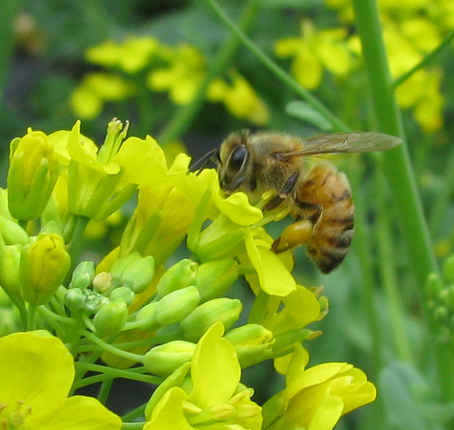
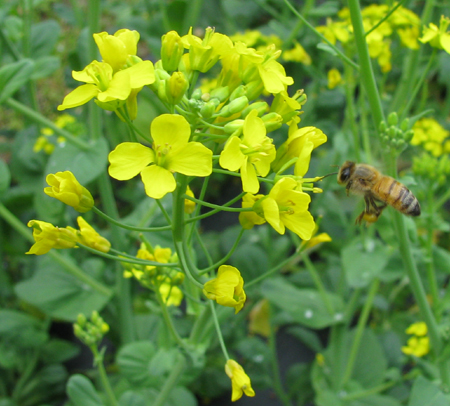
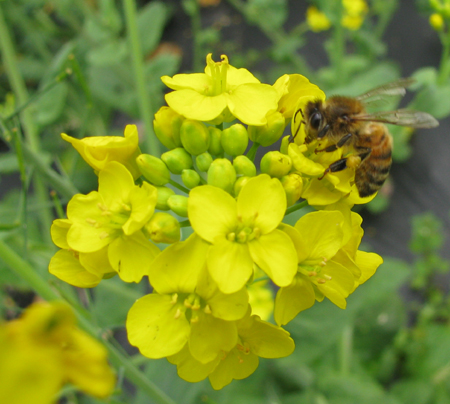
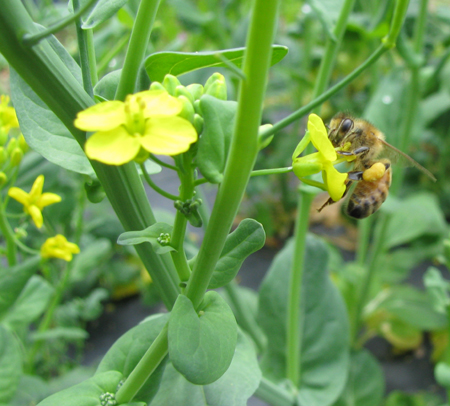
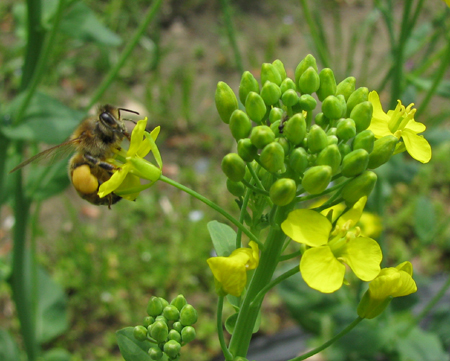
A close up showing a pollen basket –
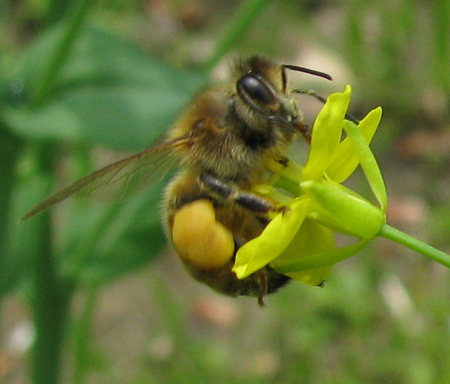
And a parting shot of some Eco Farm strawberries, which I’m sure by now have been picked –
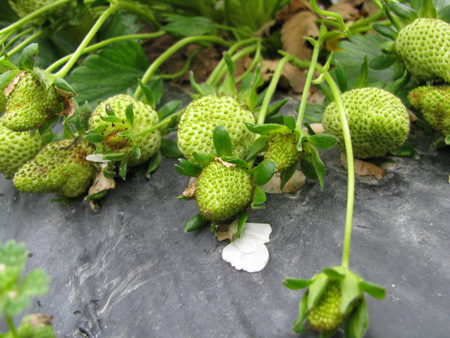
9 responses so far
9 Responses to “CFSA Farm Tour – Eco Farm”
Amazing close-ups of the bees here!!!
[…] CFSA Farm Tour – Eco Farm […]
Oh, that’s my sort of trip! Love these pictures, especially of the bees
Loved the pictures, thanks for sharing!
I am loving the pictures of all these farms & learning about it all.
One question… What is a pollen basket? Is it part of the bee or an accessory? Never really thought of how they got the pollen moved around. Course I just try to leave as much room as possible between me & them!
OK! I am the official pig kisser at Circle Acres
The pollen basket is part of the bee.
Trace Ramsey: The bee whisperer
i love that dudes hair.